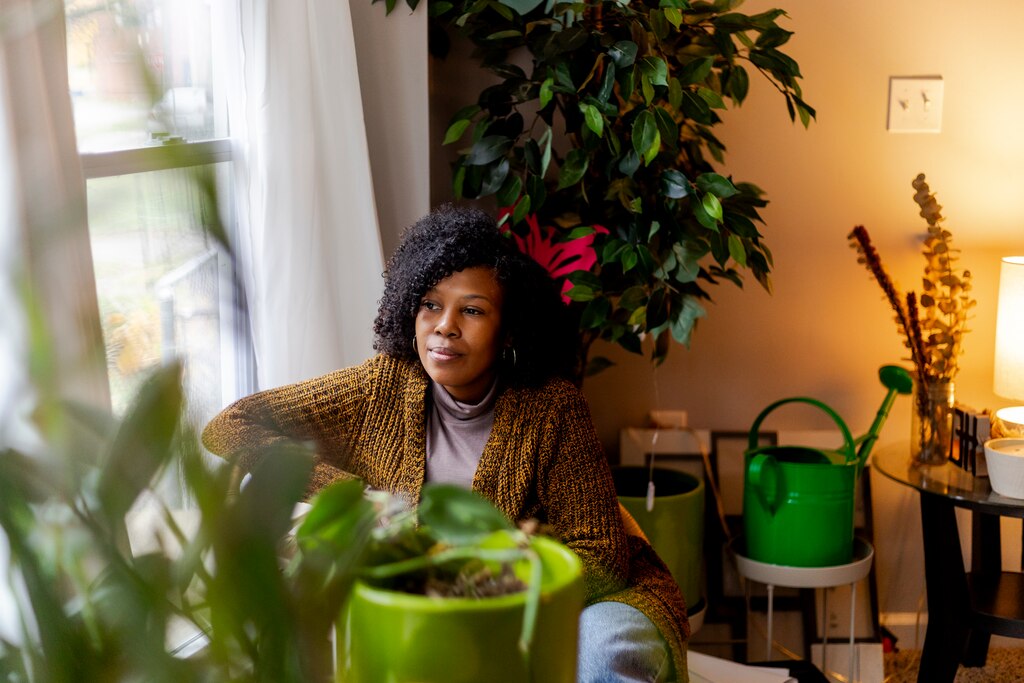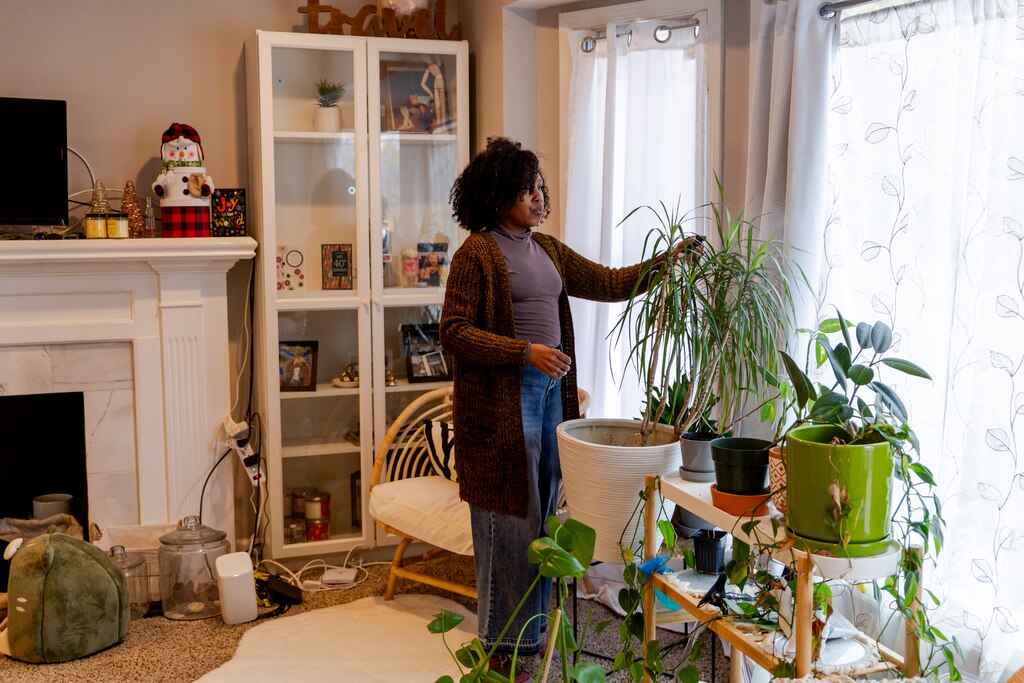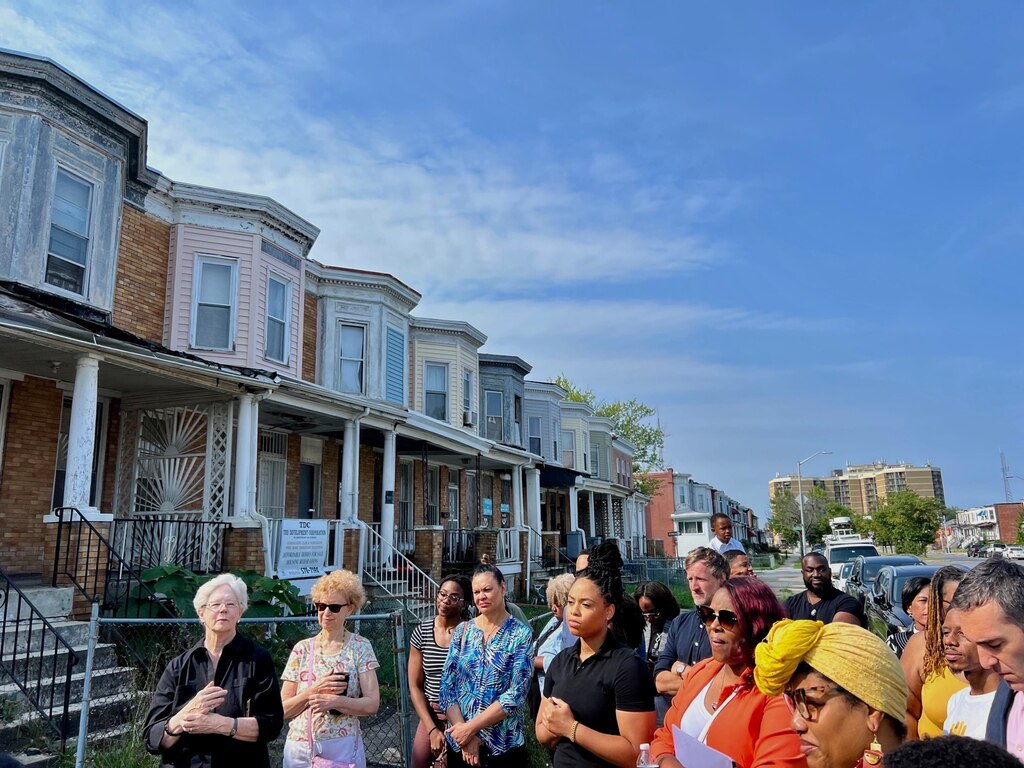Baltimore and state leaders are united in tackling the city’s glut of vacant housing over the next few years.
The private sector is joining the effort, and money, consultants and developers are trickling into town.
But increased attention and more personalities are also amplifying differences over approach. One example: creating a land bank entity that could acquire vacant properties and repurpose them. The bill failed this fall after more than a year of study by members of the City Council.
Mayor Brandon Scott pointed to Detroit’s land bank experience as a reason.
The Baltimore Banner thanks its sponsors. Become one.
“It actually didn’t help them,” he told reporters last month. “It helped them [Black residents] be pushed out.”
Detroit has feelings about that.
Empowered to foreclose, clean up tax and legal issues and then transfer properties to new owners, Detroit’s land bank, which started in 2008 but revved up considerably in 2014, has acquired and sold more than 20,000 vacant structures and 23,000 empty lots, according to its latest performance report. It possesses more than 61,000 parcels in its inventory and is steadily winding down the number of empty homes that it owns, hoping to clear the inventory within the next few years so it can focus solely on infilling vacant land.
“Our job is to work ourselves out of a job,” said Carlena Toombs, spokesperson for the Detroit Land Bank Authority.

Like Baltimore, Detroit was dealing with an excess number of vacant and abandoned homes as its population declined and jobs left the city. The land bank was a way for Detroit to handle the sudden influx of properties it had control over but didn’t have the capacity to oversee day to day.
The Baltimore Banner thanks its sponsors. Become one.
Toombs and her colleagues in Detroit city government found Baltimore’s response to the land bank proposal “unfortunate” and lacking context. The mayor, she said, should visit Detroit so he could hear from Black residents, like herself, in person.
Some people may have had unjust or unfair experiences with the land bank, she acknowledged, but others have been able to buy homes, lots and yards efficiently and relatively cheaply to turn them into affordable homes, neighborhood gathering spots or urban farms. The land bank can also work faster than city government, with less red tape and more adaptability and flexibility than traditional government systems.
A majority of the purchasers, Toombs added, have been Detroiters — and the land bank monitors them all closely to ensure they make good on their commitments to return the properties to productive use. The land bank can repossess properties that don’t get repurposed. Out of more than 40,000 total sales, only around 10,500 lots and properties have been deemed compliant with the rules, according to figures from the land bank, though many owners get extensions to keep going. Toombs said this primarily acts as a check on real estate speculators who buy land just to let it sit.
One Detroit land bank purchaser, Hosanna Smith, used the authority’s “Rehabbed and Ready” program to buy her house in 2018. A native Detroiter, Smith said the move-in-ready home fit in her budget.
“They weren’t trying to price-gouge,” Smith, a first-time homebuyer, said about the experience. “I was like, wow, this is a reasonably priced house.”
The Baltimore Banner thanks its sponsors. Become one.


Another land bank homeowner, Vincent Orr, said he’s bought two homes and a lot for a combined $3,400, starting in 2017. He said it’s afforded him a level of “economic freedom.”
Now, Orr said, as home values appreciate and Detroit receives more national attention, he acknowledges it may be more difficult to land a similarly affordable deal. But a land bank, he said, can help ensure that Detroiters can participate.
Neither the land bank nor its partners in Detroit city government believe they duplicate efforts.
“They’ve been a partner with us the entire way,” said Julie Schneider, director of the Detroit Housing & Revitalization Department, the equivalent of Baltimore’s Department of Housing and Community Development. In particular, Schneider said, the land bank has helped the department strategically buy properties and “hold” them until trusted developers cobble together financing.
In Detroit, the land bank owns the residential properties while the housing department owns the commercial stock, Schneider added — meaning their work can’t overlap.
The Baltimore Banner thanks its sponsors. Become one.
At a three-hour hearing in Baltimore about the land bank proposal in September, city agency leaders called land banking an imperfect solution that could peel precious financial resources away from city government. They said Detroit, for example, is funded with help from city government, which contributed $11 million toward its annual budget in the fiscal year that began in mid-2023, about half of what it takes to operate with a staff of about 150 people.
City leaders rejected the premise that a land bank would serve a helpful, or complementary, purpose.
“I believe the city has the power to solve its problems from the inside,” said Justin Williams, Baltimore’s deputy mayor for economic and community development, at the hearing in mid-September. “We know that, when we bring all our energy and resources to bear, we can get the job done.”
Some city agency leaders questioned how the land bank would be financed and raised concerns about its potential oversight and how it would comply with city and state transparency laws. Housing Commissioner Alice Kennedy argued that while the mayor, for example, is elected by the people, the land bank would be accountable only to its board and its investors, which could undermine its mission.

Among those that support land banks is JPMorgan Chase, which is pivoting to Baltimore after investing in Detroit’s economic revitalization following the city’s historic bankruptcy in 2013. In an April 2024 JPMorgan Chase white paper that outlines how to tackle persistent residential vacancy, the firm suggests that land banks can help communities address blight at scale and work with neighborhoods to achieve specific goals.
The Baltimore Banner thanks its sponsors. Become one.
“This added capacity increases efficiency,” the paper states, “particularly as many city agencies are constrained by budget and staff and may only be able to tackle vacant properties at small numbers at a time.”
The paper also acknowledges that the costs associated with launching land banks are a potential barrier; in 2014, it contributed a $5 million grant to the Detroit land bank.
Brian Larkin, the national director of the land bank network for the Center for Community Progress think tank, said Detroit does not have to be the blueprint for Baltimore.
For example, Larkin said, most land banks have much smaller portfolios — the median is 40, he said — and a median staff of one full-time employee. Baltimore, he said, has the largest concentration of vacant homes that are not utilizing the support of a land bank. What does it plan to use in its stead?
Land banks gained traction in the U.S. after the 2008 recession, a strategy to help communities like Detroit that were hit hard by the foreclosure crisis. Governments have strict procedures for shedding properties, Larkin said, including stipulations to transfer them to the highest bidders at auction. But land banks, he said, can help produce more equitable and grassroots-driven outcomes.
The Baltimore Banner thanks its sponsors. Become one.
“The work of a land bank is taking the worst of the worst, the hardest to deal with, and trying to connect it to solutions,” Larkin said. “That small, local developer who wants to be hand-held, or a resident that wants to expand their yard, or a church that wants to own it so the youth can come in and cut the grass.”

Community developers and housing advocates in Baltimore said the land bank could help them work faster to get their jobs done — especially in the neighborhoods with the most blight.
“While DHCD can do everything a land bank can do, the question is: Should they?” said Bree Jones, the founder of Parity Homes, which is working to restore the Harlem Park neighborhood. “The land bank is an opportunity to speed up and hyper-focus on an issue.”
The mayor, along with partners at the Greater Baltimore Committee and BUILD Baltimore, an interfaith community advocacy group, unveiled a comprehensive strategy in late 2023 to take on vacant housing as a priority issue. Last month, the group joined forces with the state and pledged to drill down on the problem once and for all, with a goal of eliminating 5,000 vacant homes in five years.
The three groups haven’t come together on a single issue since the late 1980s, when they partnered to launch the CollegeBound Foundation to help get Baltimore City Public Schools students “to and through” college. It became one of the city’s foundational programs and has supported thousands of students — including the mayor.
On the vacant-housing problem, the partners have been vocal about the price tag necessary to combat the problem and have committed to using a “whole block” approach that systematically lifts entire neighborhoods at once. But, on land banks, their stance is less unified.
GBC CEO and President Mark Anthony Thomas said that while the organization doesn’t have a formal view on the matter, he’s seen land banks across the country that have worked well and others that have been less effective. BUILD declined to comment.
Baltimore Banner reporter Lee O. Sanderlin contributed to this article.




Comments
Welcome to The Banner's subscriber-only commenting community. Please review our community guidelines.